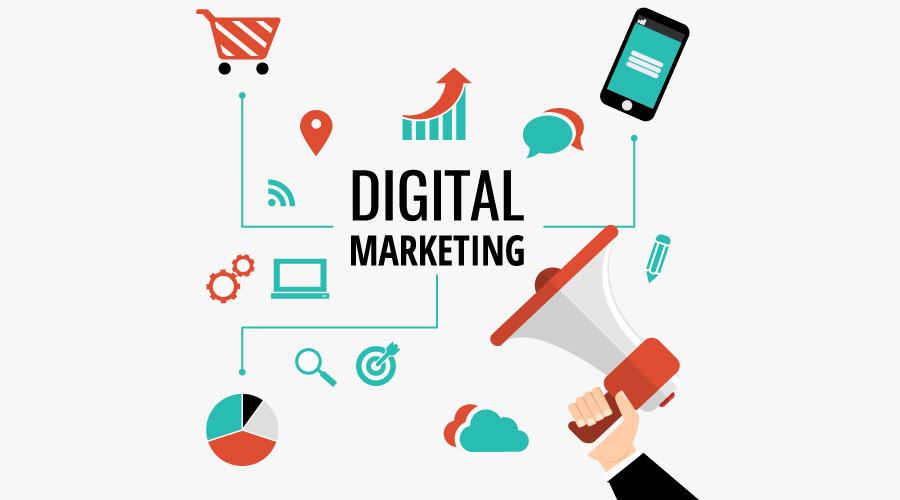Studying Information to Optimize Your Digital Advertising Efficiency
In an age where electronic footprints are vital, evaluating data is critical to optimizing your digital marketing performance. This data-driven method not only lines up advertising initiatives with customer choices but also takes full advantage of Return on Financial investment. Interested regarding taking your advertising and marketing to the following degree?
Identifying Key Metrics

CTR indicates the portion of customers that click on an advertisement or link, offering insight right into the effectiveness of imaginative possessions and targeting techniques. ROI, on the other hand, examines the earnings family member to the expenses incurred, using a comprehensive sight of the monetary impact of marketing activities.
Furthermore, various other essential metrics like Customer Purchase Cost (CAC) and Life Time Worth (LTV) provide much deeper understandings into the cost-effectiveness and long-term value produced from advertising and marketing initiatives. By carefully tracking these KPIs, businesses can make data-driven choices to fine-tune and improve their electronic advertising and marketing approaches.
Understanding Consumer Behavior
Structure on the foundation of key metrics, a thorough understanding of consumer behavior gives a nuanced viewpoint that drives extra reliable electronic marketing techniques. By analyzing how customers communicate with your online systems, you can discover patterns and choices that educate targeted marketing efforts. This includes looking at numerous touchpoints such as website navigation, content usage, and social media sites interaction.
Understanding client habits begins with segmenting your target market based on market, psychographic, and behavioral data. This division allows for individualized advertising, catering to specific requirements and preferences of distinctive groups. Recognizing frequent purchasers versus single buyers can aid tailor advertising deals and communication approaches as necessary.
Additionally, mapping the client trip is critical. This entails tracking the actions a client draws from first recognition to last acquisition, and also post-purchase involvement. By doing so, you can identify potential drop-off points and optimize these locations to enhance consumer retention and conversion rates.
Additionally, assessing comments and assesses deals straight understandings right into customer fulfillment and locations for enhancement. Understanding the inspirations, pain points, and expectations of your audience makes it possible for the crafting of even more resonant and efficient advertising messages, ultimately driving greater interaction and commitment.
Leveraging Analytical Devices
Using the power of analytical devices is important for optimizing electronic advertising and marketing efficiency. These tools supply granular understandings right into various facets of advertising projects, from target market engagement to conversion prices. By leveraging platforms such as Google Analytics, HubSpot, and Adobe Analytics, marketers can track essential performance indicators (KPIs) and acquire actionable data. This data-driven approach allows organizations to make informed choices, fine-tune strategies, and assign sources extra efficiently.
The energy of logical devices extends beyond simple data collection. They promote the recognition of trends, patterns, and anomalies that may otherwise go unnoticed. Heatmaps can expose customer communication with internet site components, while A/B testing devices can figure out the performance of different material variants. Additionally, anticipating analytics can forecast future trends, permitting marketing professionals to remain in advance of the contour.
Integrating analytical tools with various other digital advertising and marketing platforms, such as social media sites and e-mail advertising and marketing software program, develops a natural ecological community for detailed efficiency monitoring. This alternative sight ensures that all facets of a digital advertising and marketing strategy are lined up and enhanced. In a significantly affordable check out here electronic landscape, the capability to leverage logical tools successfully can be the making a decision aspect in between success and stagnancy.
Enhancing Material Approach

One trick facet of enhancing material strategy is understanding target market preferences and behavior. Analytics can expose market info, top engagement times, and preferred material styles, such as blogs, infographics, or videos. This knowledge permits marketers to tailor their material to meet the certain requirements and rate of interests of their target market, thereby raising the possibility of involvement and conversion.
Moreover, continuous monitoring and analysis of content performance give understandings right into what is functioning anonymous and what requires adjustment. A/B testing different headlines or calls-to-action can produce important information on components that drive the most interaction. Additionally, tracking content performance throughout various channels helps in enhancing distribution methods, making certain that the best material gets to the appropriate target market with one of the most efficient platforms.
Fundamentally, data-driven web content strategy enhancement is a cyclical process of refinement, implementation, and evaluation, geared towards providing optimal worth to both the organization and the target market.
Measuring Campaign Success
Measuring project success is vital for recognizing the efficiency of digital advertising campaigns and making educated decisions for future initiatives. Exact measurement allows marketing experts to examine if their approaches are accomplishing preferred objectives, such as enhancing brand awareness, producing leads, or increasing sales. Key efficiency indications (KPIs) are important metrics that provide insights right into campaign performance. Common KPIs consist of click-through rates (CTR), conversion prices, roi (ROI), and client acquisition costs (CAC)
To successfully gauge project success, it is vital to set clear, quantifiable goals from the beginning. These objectives should be aligned with more comprehensive company goals and supply a standard for evaluating performance. Utilizing tools like Google Analytics, social networks analytics, and CRM systems can promote the tracking of these KPIs and offer real-time data insights.
Examining this data helps determine which components of the project are functioning well and which call for adjustments. For example, a low CTR might show that ad duplicate needs refinement, while a high CAC can recommend a need for targeting optimization. Continuous visit the site tracking and evaluation make certain that advertising and marketing initiatives are responsive and dexterous, inevitably bring about much more effective and effective campaigns.
Final Thought
Finally, the optimization of digital marketing efficiency with information analysis is vital. Identifying crucial metrics such as Click-Through Rates (CTR) and Conversion Fees (CR) permits a deeper understanding of consumer behavior. Leveraging logical devices, consisting of Google Analytics and heatmaps, improves material strategies and campaign efficiency. Continuous monitoring and data-driven adjustments make certain that marketing initiatives straighten with advancing trends, inevitably driving greater Roi (ROI) and attaining calculated goals.
